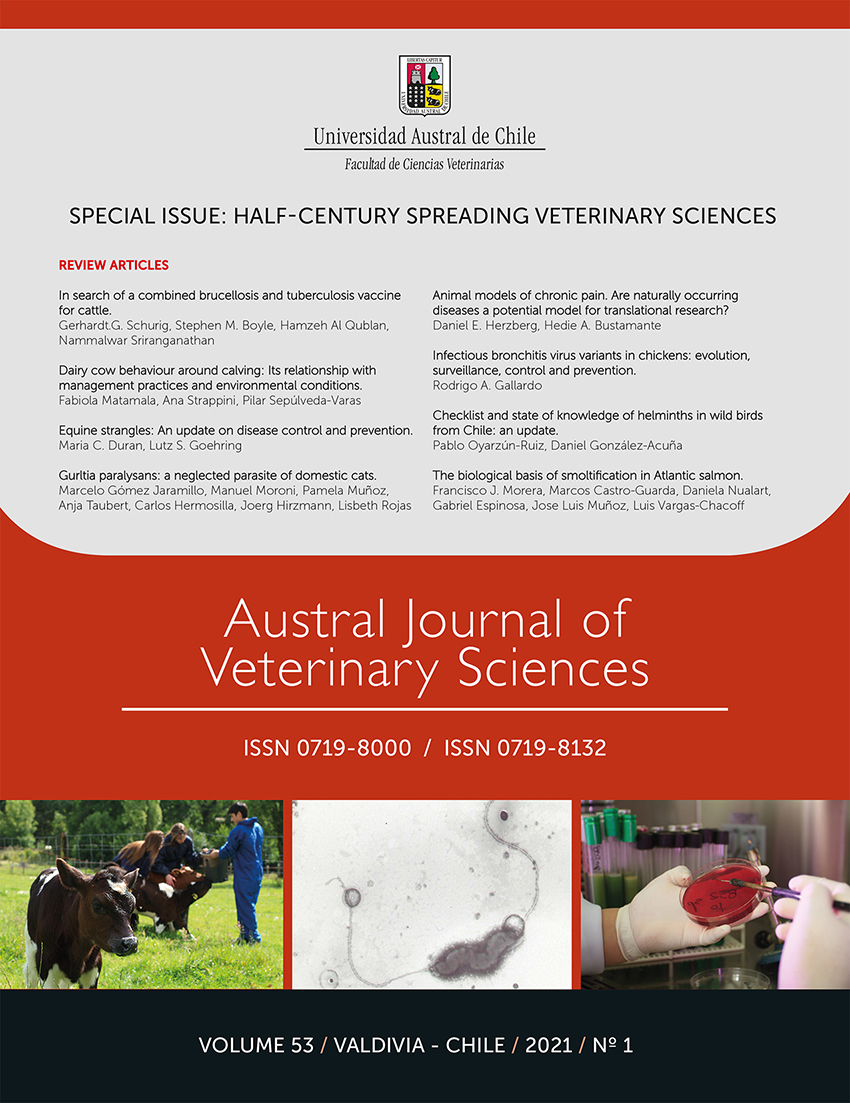Checklist and state of knowledge of helminths in wild birds from Chile: an update
Conteúdo do artigo principal
Resumo
Helminths are an important component of biodiversity with over 24,000 species parasitising wild birds globally, with this figure on the rise given the growing interest in wildlife parasitology. The present study aimed to establish an updated baseline of the helminthological surveys on wild birds from Chile. Available publications were reviewed to build a parasite-host association checklist and also to discuss the state of knowledge regarding these parasites. A total of 92 publications were found between the years 1892 and 2019. Regarding helminth parasites, 174 taxa belonging to 3 phyla and 37 families were recorded, 114 taxa were identified at species level, with the rest remaining incompletely described. Also, 4 taxa corresponded to new genera and 16 to new at species for science. The most reported parasites were platyhelminthes (53.9%) followed by nematodes (36.2%) and acanthocephalans (9.2%). Sixty-five avian species from 19 orders have been recorded as hosts, with most of them having been studied only once (64.6%). Out of these, the order Charadriiformes had the highest number of publications (n=23). In the case of the avian species present in the country, 14.2% of native, 40% of endemic and 22.2% of exotic species have been recorded hosting helminths. Regarding heteroxenous parasites, only 2 species have had their life cycles elucidated. Among the methodologies used for parasitic identification, 48.9% of the studies used morphological tools, 5.4% used molecular tools and 4.3% used both tools. For that reason, there are evident gaps in the data concerning the hosts sampled, methodologies and issues related to the biology of parasites such as life cycles, among others. In this sense, the need for specialists and cooperative research becomes indispensable to improve our understanding of helminths.

